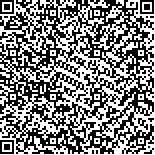| 引用本文: | 陈 琴, 陈代喜, 劳广杰, 黄开勇, 梁 机, 莫勇德.杉木未成熟胚胚性愈伤组织诱导影响因素探析[J].广西植物,2017,37(5):587-591.[点击复制] |
| CHEN Qin, CHEN Dai-Xi, LAO Guang-Jie, HUANG Kai-Yong,
LIANG Ji, MO Yong-De.Exploration and analysis of influence factors of embryogenic callus induction from immature zygotic embryos of Cunninghina lanceolata[J].Guihaia,2017,37(5):587-591.[点击复制] |
|
| |
|
|
| 本文已被:浏览 5779次 下载 2839次 |

码上扫一扫! |
|
|
| 杉木未成熟胚胚性愈伤组织诱导影响因素探析 |
|
陈 琴1, 陈代喜1*, 劳广杰2, 黄开勇1, 梁 机3, 莫勇德4
|
|
1. 广西壮族自治区林业科学研究院, 广西优良用材林资源培育重点实验室, 南宁 530002;2. 广西融安县西山林场,
广西 柳州 545400;3. 广西大学 林学院, 南宁 530005;4. 环江毛南族自治县川山镇林业工作站, 广西 河池 547100
|
|
| 摘要: |
| 该研究从基因型、6-BA浓度、外植体接种方式和合子胚发育阶段等方面,分析杉木未成熟胚胚性愈伤组织诱导的影响因素。结果表明:基因型、6-BA浓度、外植体接种方式和合子胚发育阶段均对胚性愈伤组织诱导频率有不同程度影响。6种基因型中,有3种基因型诱导出胚性愈伤组织,其中基因型S18胚性愈伤组织诱导频率最高,为11.7%。6-BA浓度在1.0~1.5 mg·L-1范围内时,基因型S18的胚性组织诱导频率较高。以在去皮种子的一端切开一个小口的接种方式为最优,将合子胚剥出的方式易造成合子胚褐化死亡,将未剥皮的种子切开一个小口后直接接入培养基的方式不利于愈伤组织生成。适合胚性愈伤组织诱导的合子胚发育阶段为受精至胚器官分化阶段,合子胚进入成熟阶段后不利于胚性愈伤组织诱导,合子胚易生长成完整植株。 |
| 关键词: 杉木, 未成熟胚, 胚性愈伤组织, 诱导 |
| DOI:10.11931/guihaia.gxzw201608016 |
| 分类号:Q943.1 |
| 文章编号:1000-3142(2017)05-0587-05 |
| 基金项目:广西优良用材林资源培育重点实验室开放课题(14B0302); 广西自然科学基金(2016GXNSFBA380112); 广西科学研究与技术开发计划项目(桂科转1599004-9)[Supported by Guangxi Key Laboratory Open Program of Superior Timber Trees Resource Cultivation(14B0302), Guangxi Natural Science Foundation(2016GXNSFBA380112); Guangxi Science Research and Technology Development Program(1599004-9)]。 |
|
| Exploration and analysis of influence factors of embryogenic callus induction from immature zygotic embryos of Cunninghina lanceolata |
|
CHEN Qin1, CHEN Dai-Xi1*, LAO Guang-Jie2, HUANG Kai-Yong1,
LIANG Ji3, MO Yong-De4
|
|
1. Guangxi Key Laboratory of Superior Timber Trees Resource Cultivation, Forestry Research Institute, Guangxi Zhuang Autonomous
Region, Nanning 530002, China;2. Xishan Forest Farm of Rongan Country in Guangxi, Liuzhou 545400, Guangxi, China;3. College of Forestry, Guangxi University, Nanning 530002, China;4. Forestry Working Station in
Chuanshan Town of Huanjiang Maonan Autonomous County, Hechi 547100, Guangxi, China
1. Guangxi Key Laboratory of Superior Timber Trees Resource Cultivation, Forestry Research Institute, Guangxi Zhuang Autonomous
Region, Nanning 530002, China; 2. Xishan Forest Farm of Rongan Country in Guangxi, Liuzhou 545400, Guangxi, China;
3. College of Forestry, Guangxi University, Nanning 530002, China; 4. Forestry Working Station in
Chuanshan Town of Huanjiang Maonan Autonomous County, Hechi 547100, Guangxi, China
|
| Abstract: |
| Cunninghamia lanceolata is a fast-growing and high-yield timber forest species endemic in China. It has many advantages of fast growth, high production, good quality and wide use, and plays an important role in the forestry production in South China. In this research, an experiment of embryogenic callus induction was carried out. In the experiment, six different genotypes of C. lanceolata improvement species were used as initial explant, and four factors affecting embryogenic callus induction were studied and analysed. These four factors were the key elements on embryogenic callus formation, and they were as follows: genotypes, 6-BA combination, inoculating ways and developmental stages of immature zygotic embryos including. The results showed that the factors of genotypes, 6-BA combination, inoculating ways and developmental stages of immature zygotic embryos all had significant effects on the induction rate of embryogenic callus, but the influence degree each were not identical. Three genotypes in six genotypes obtained embryogenic callus, and one of the genotype(S18)had the highest induction rate of embryogenic callus with 11.7%. When the range of 6-BA combinations was from 1.0 mg·L-1 to 1.5 mg·L-1, the genotype S18 had the highest induction rate. The best method of inoculating was to peel and cut a small hole on end of seed. It was not a good inoculating way to take out zygotic embryos from endosperm, and the zygotic embryos were easy to die in that way. The inoculating method of only cutting a small hole on end of seed and non-peeling was unsuited for embryogenic callus induction. The suitable developmental stage for embryogenic callus induction was from fertilization stage to embryo organ differentiation stage, and it was difficult to obtain embryogenic callus when the zygotic embryos entered into the mature stage. The results indicated that the zygotic embryos which already entered into the mature stage were used as initial explants in the experiment of embryogenic callus induction, and they grew into a complete plant, not callus |
| Key words: Cunninghina lanceolata, immature zygotic embryo, embryogenic callus, induction |
|
|
|
|
|